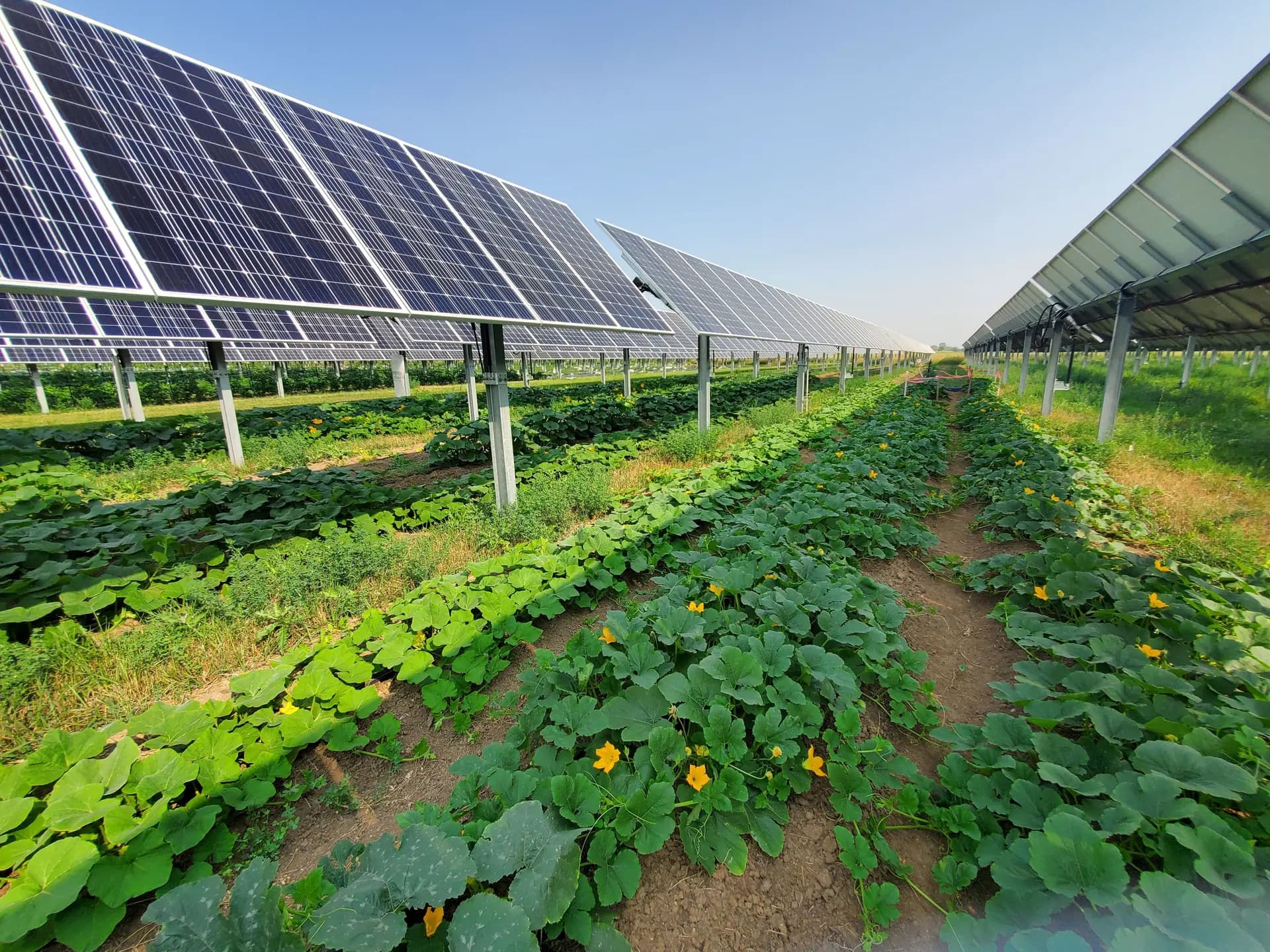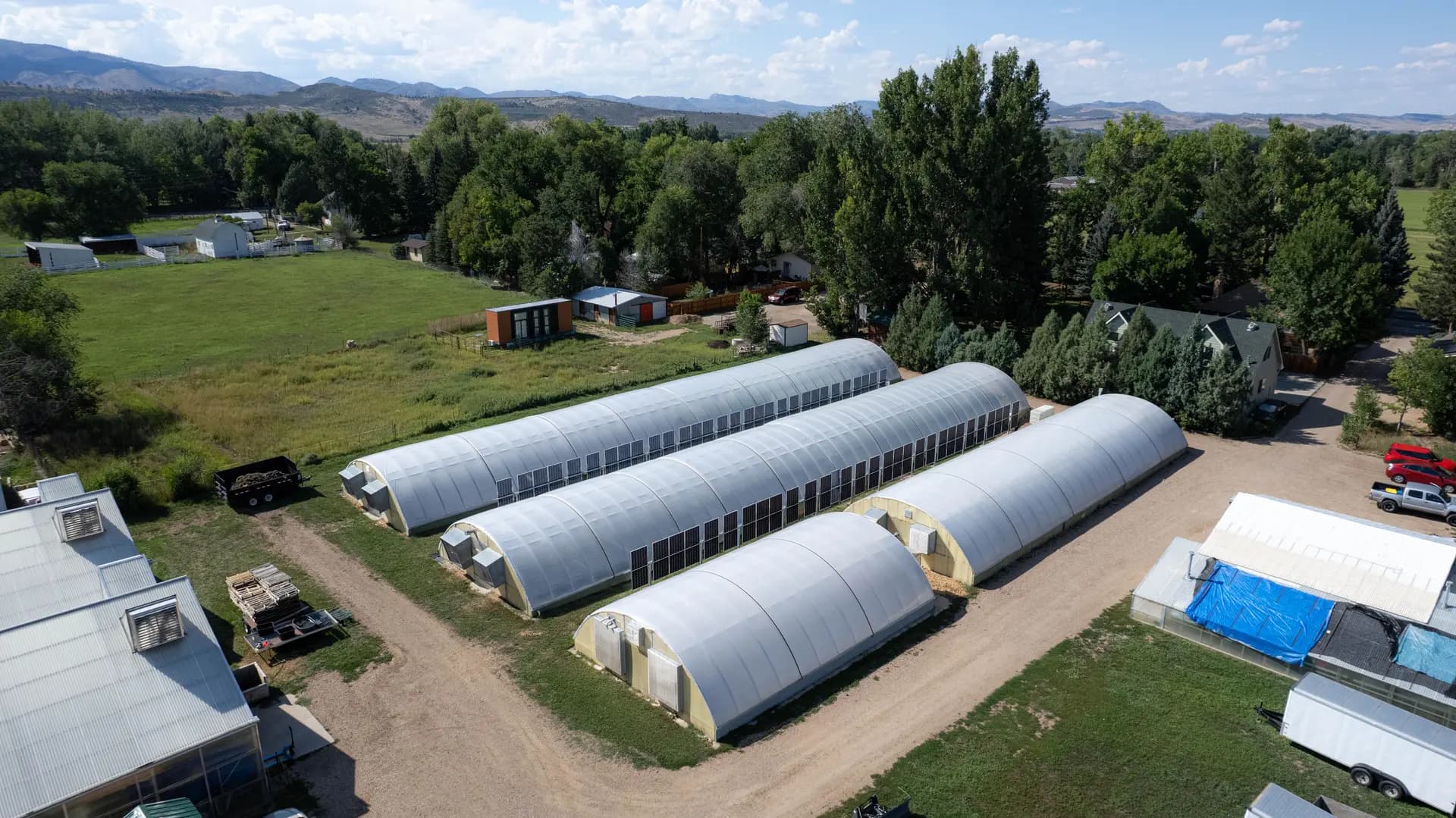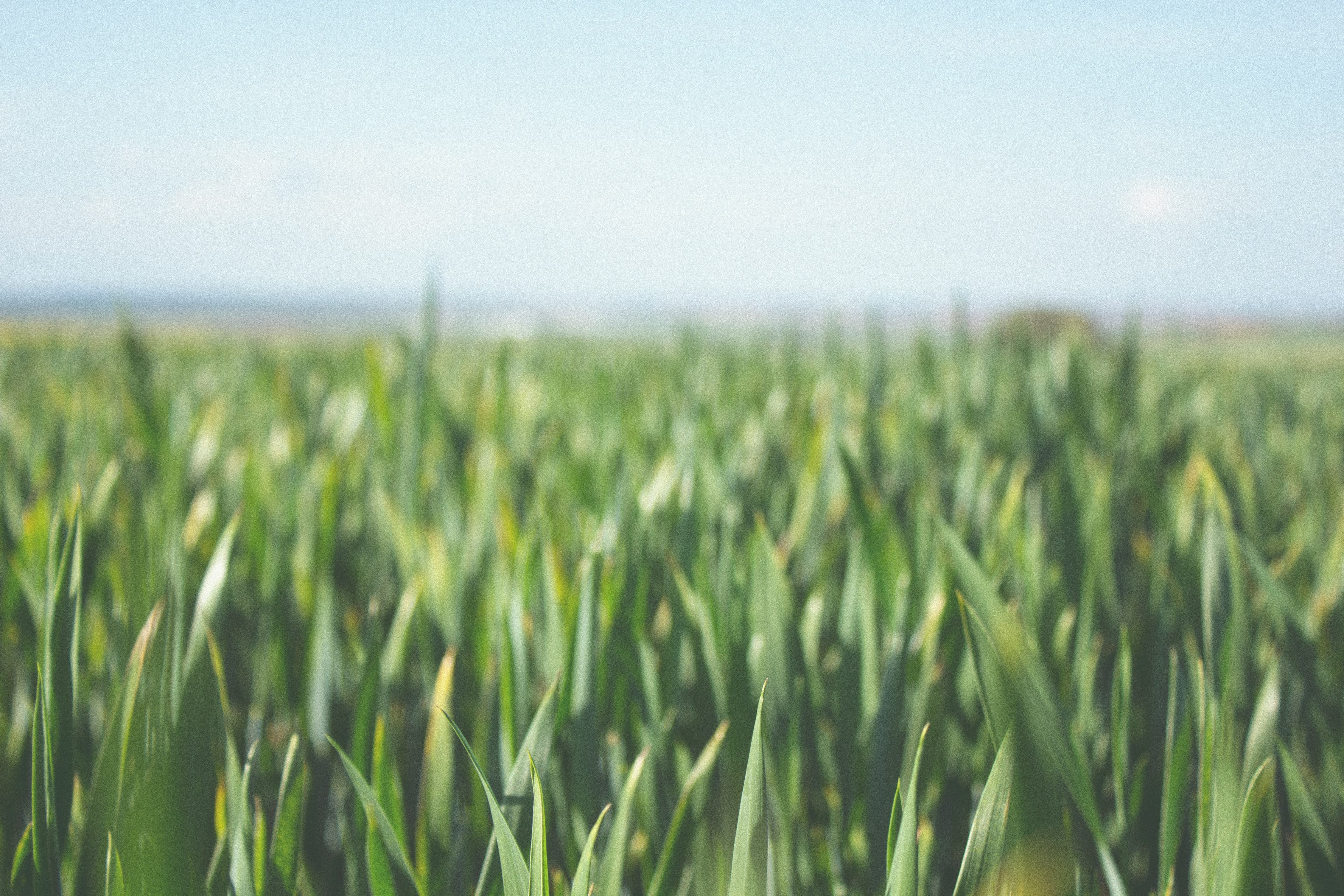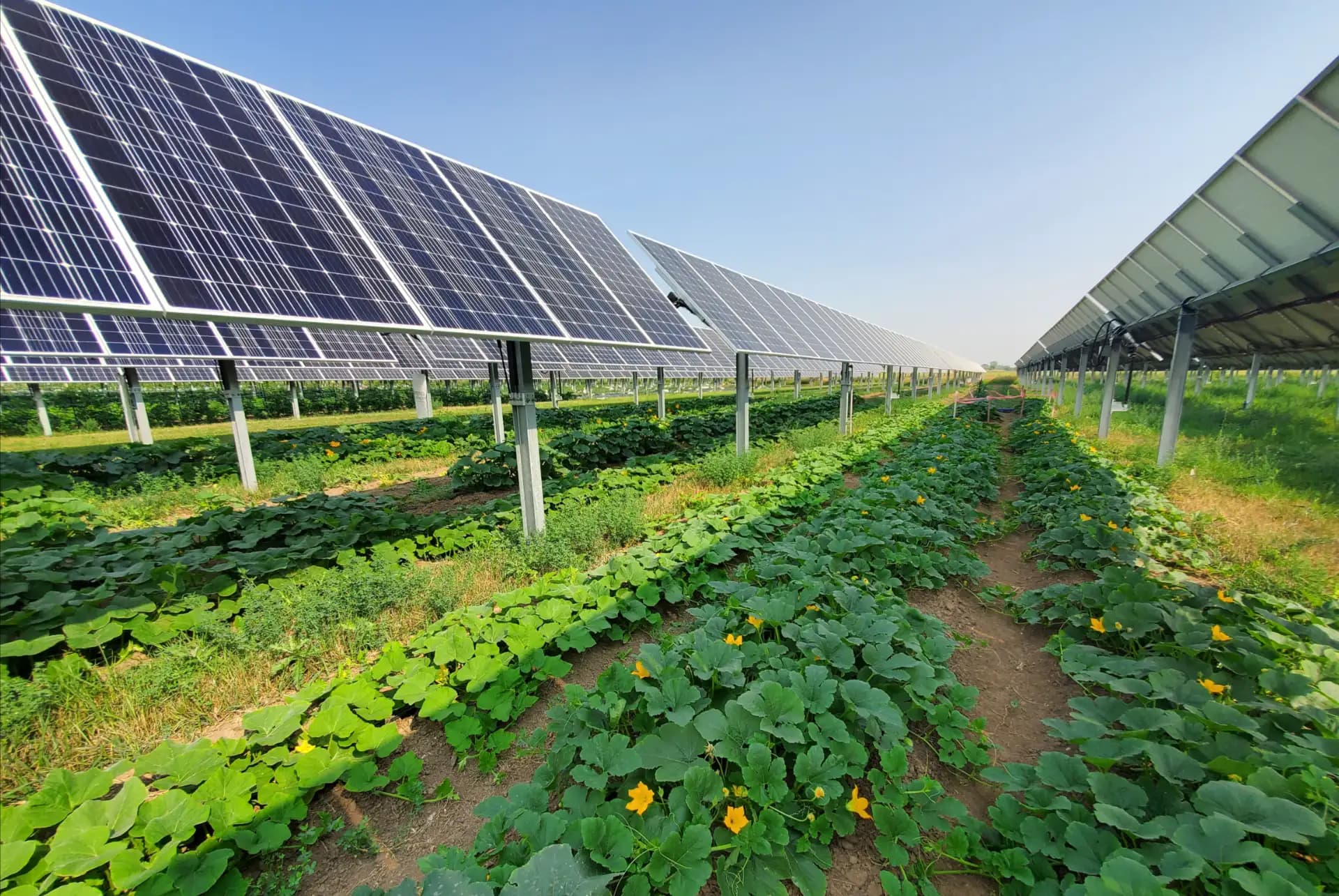New Tools, New Insights: Introducing Crop Modeling with Spade Agrivoltaics
SpadeAgrivoltaics now offers integrated crop modeling using DSSAT to simulate yield outcomes under solar panel shade, helping optimize agrivoltaic system design and performance.
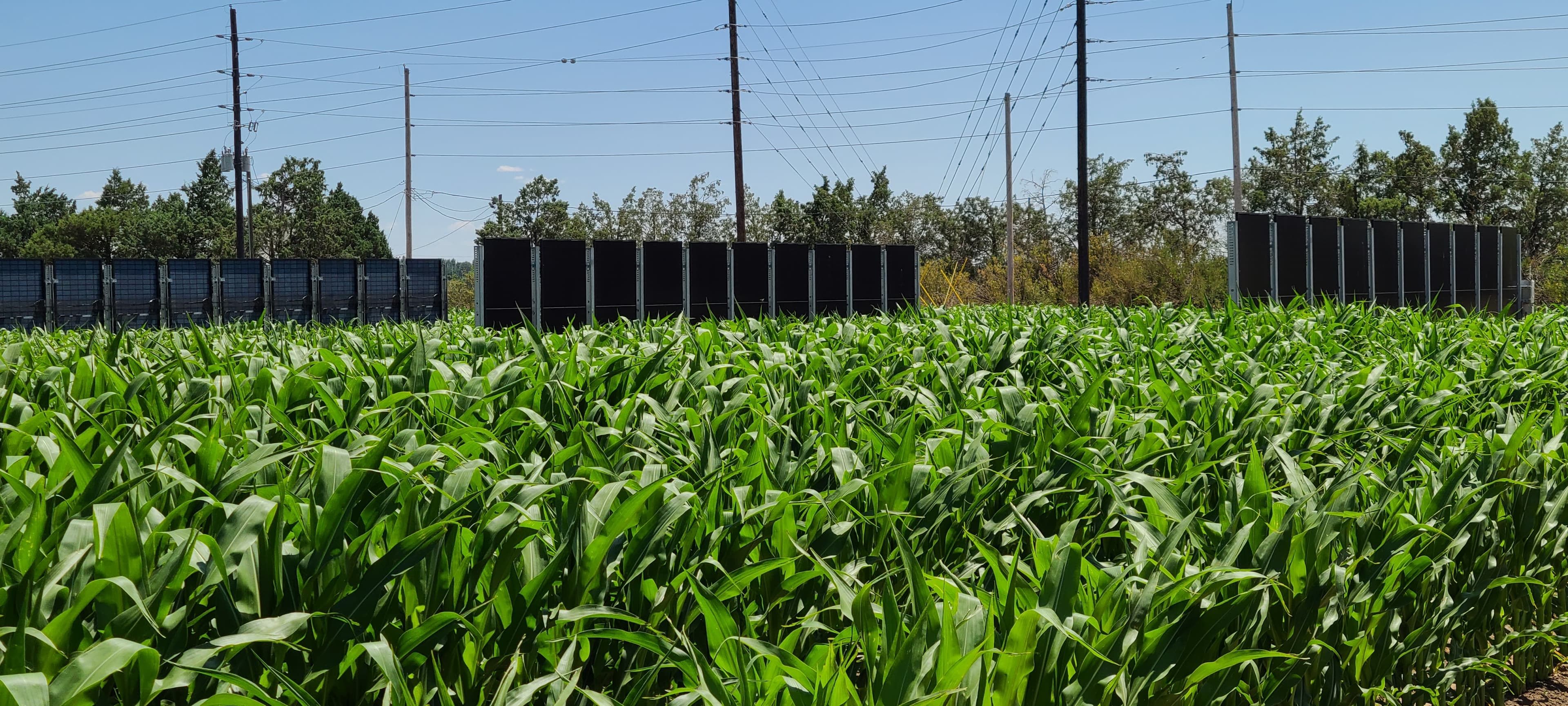
Agrivoltaic Testing Grounds
The Agrivoltaic Testing Grounds is a collaborative project between Sandbox Solar and Colorado State University, located in Fort Collins, CO, bridging academic research and industry application. Since 2018, both teams have been evaluating the impact of solar development on cropping systems. The vertical bifacial solar fence installed in the Spring of 2024 represents a cutting-edge approach to maximizing land use efficiency, capturing both energy and crop data in real time. The growing season of 2024 featured Bayer Crop Science silage corn. This case study uses the DSSAT tool to model the yield production of several crops: Silage Corn, Green Beans, and Soybeans. The shading analysis was completed by SpadeAgrivoltaics, an agrivoltaic design model developed by Sandbox Solar. Reach out to us to complete a shading + cropping analysis for your system!
Spade Agrivoltaic Light Analysis
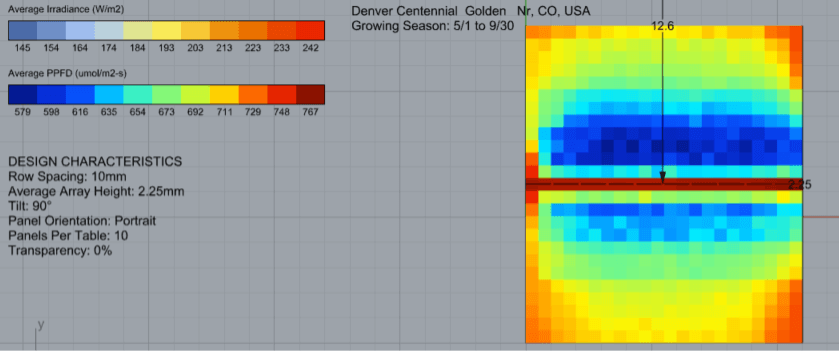
General Simulation Parameters
- Based on the 2024 season: rainfall, temperature, solar radiation, minimum and maximum daily temperatures.
- Maximum Shading - 15% from the control
- Average Shading - 11% from the control
- Control - Solar Radiation Measurements Collected on Site
Green Bean Production
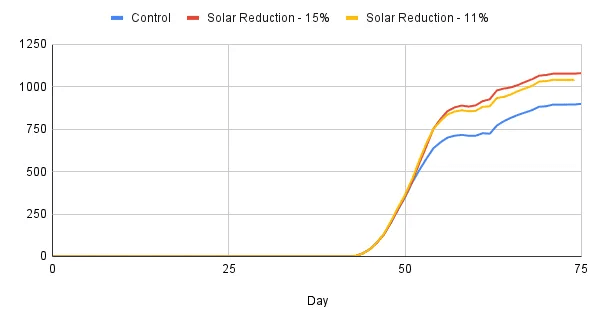
Green Bean Parameters
- Variety: Bronco Bush Beans
- Planting Date: May 14th, 2024
- Plant Population: 25 plants per square meter
- Irrigation: 5mm of water applied every 10 days (40mm for the total season)
Yield, End of Season
- Control - 899 kg/ha pod yield
- 15% shade - 1080 kg/ha pod yield
- Percent Increase - 20%
- 11% shade - 1040 kg/ha pod yield
- Percent Increase - 15%
Simulation Insight
With limited water production, shade benefited plant growth and boosted pod yield (kg/ha) after 75 days of growth. It is a safe assumption that green bean yield will improve under agrivoltaic conditions in Northern Colorado.
Silage Corn Production
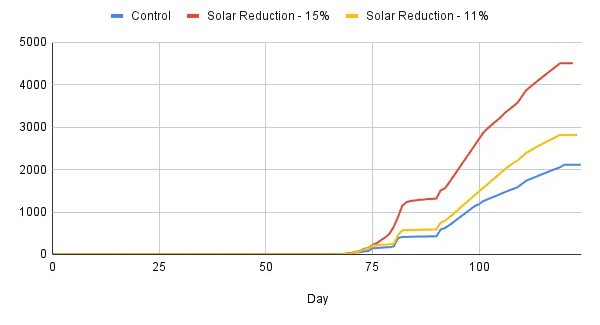
Silage Corn Parameters
- Variety: Bayer Science Channel Corn
- Planting Date: May 8th, 2024
- Plant Population: 6.7 plants per square meter
- Irrigation: 5.5mm of water applied approximately every 10 days (55mm for the total season)
Yield, End of Season
- Control - 2115 kg/ha pod yield
- 15% shade - 4505 kg/ha pod yield
- Percent Increase - 113%
- 11% shade - 2819 kg/ha pod yield
- Percent Increase - 33%
Simulation Insight
With limited water production, shade benefited plant growth and boosted corn ear yield (kg/ha) after 125 days of growth. More detailed research is needed to determine the impact of shade on corn development in a water-limited scenario. Although the model increase reached 113%, actual field outcomes are expected to be lower, as real-world variability and environmental stressors tend to reduce peak performance. Stay in touch when we can publish the actual yield from the 2024 season.
Soybean Production
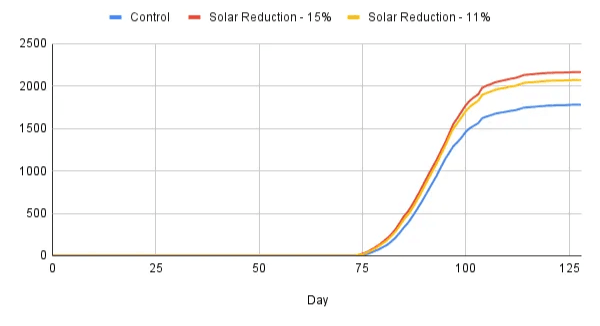
Soybean Parameters
- Variety: Maturity Group 2.5, similar to Asgrow AG25XF1
- Planting Date: May 14th, 2024
- Plant Population: 30 plants per square meter
- Irrigation: 5mm of water applied every 10 days (50mm for the total season)
Yield, End of Season
- Control - 1780 kg/ha pod yield
- 15% shade - 2164 kg/ha pod yield
- Percent Increase - 21%
- 11% shade - 2070 kg/ha pod yield
- Percent Increase - 16%
Simulation Insight
In a dryland experiment with low irrigation input (50mm), soybeans responded well to agrivoltaic conditions. Modeled yields increased under both shaded conditions. Pod yield (kg/ha) increased when solar radiation was limited.
Crop Analysis with SpadeAgrivoltaics
We're excited to announce a new capability at SpadeAgrivoltaics: cropping system analysis beneath solar arrays! Our preliminary report showcases how crops respond to the shade created by solar panels, using modeled scenarios based on common agricultural practices in Northern Colorado.
In this report, we explored a water-limited environment paired with reduced solar radiation, simulating conditions beneath an agrivoltaic array. The results demonstrate the potential benefits of strategic crop management under these unique conditions, and this is just the beginning.
Have a specific crop or location in mind? Let us test it!
Whether you are planning, proving, or optimizing your agrivoltaic system, we are here to help. Through the combination of deep industry expertise, our proprietary Spade model, and the trusted DSSAT crop model, we deliver insights you can rely on.
Citation: DSSAT 4.8.6
Hoogenboom, G., C.H. Porter, K.J. Boote, V. Shelia, P.W. Wilkens, U. Singh, J.W. White, S. Asseng, J.I. Lizaso, L.P. Moreno, W. Pavan, R. Ogoshi, L.A. Hunt, G.Y. Tsuji, and J.W. Jones. 2019. The DSSAT crop modeling ecosystem. In: p.173-216 [K.J. Boote, editor] Advances in Crop Modeling for a Sustainable Agriculture. Burleigh Dodds Science Publishing, Cambridge, United Kingdom (https://dx.doi.org/10.19103/AS.2019.0061.10).
Hoogenboom, G., C.H. Porter, V. Shelia, K.J. Boote, U. Singh, W. Pavan, F.A.A. Oliveira, L.P. Moreno-Cadena, T.B. Ferreira, J.W. White, J.I. Lizaso, D.N.L. Pequeno, B.A. Kimball, P.D. Alderman, K.R. Thorp, S.V. Cuadra, M.S. Vianna, F.J. Villalobos, W.D. Batchelor, S. Asseng, M.R. Jones, A. Hopf, H.B. Dias, A. Jintrawet, R. Jaikla, E. Memic, L.A. Hunt, and J.W. Jones. 2024. Decision Support System for Agrotechnology Transfer (DSSAT) Version 4.8.5 (www.DSSAT.net). DSSAT Foundation, Gainesville, Florida, USA.
Jones, J.W., G. Hoogenboom, C.H. Porter, K.J. Boote, W.D. Batchelor, L.A. Hunt, P.W. Wilkens, U. Singh, A.J. Gijsman, and J.T. Ritchie. 2003. The DSSAT cropping system model. European Journal of Agronomy 18:235-265 (https://doi.org/10.1016/S1161 0301(02)00107-7).
Article by Jack Donovan
